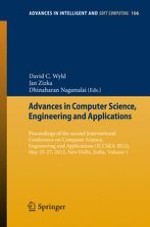The International conference series on Computer Science, Engineering & Applications (ICCSEA) aims to bring together researchers and practitioners from academia and industry to focus on understanding computer science, engineering and applications and to establish new collaborations in these areas. The Second International Conference on Computer Science, Engineering & Applications (ICCSEA-2012), held in Delhi, India, during May 25-27, 2012 attracted many local and international delegates, presenting a balanced mixture of intellect and research both from the East and from the West. Upon a strenuous peer-review process the best submissions were selected leading to an exciting, rich and a high quality technical conference program, which featured high-impact presentations in the latest developments of various areas of computer science, engineering and applications research.
